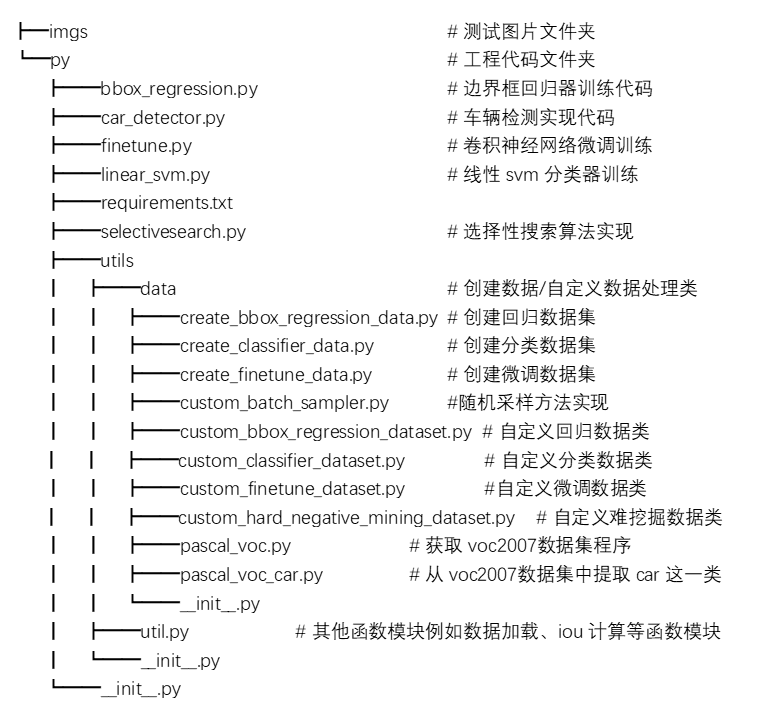1
2
3
4
5
6
7
8
9
10
11
12
13
14
15
16
17
18
19
20
21
22
23
24
25
26
27
28
29
30
31
32
33
34
35
36
37
38
39
40
41
42
43
44
45
46
47
48
49
50
51
52
53
54
55
56
57
58
59
60
61
62
63
64
65
66
67
68
69
70
71
72
73
74
75
76
77
78
79
80
81
82
83
84
85
86
87
88
89
90
91
92
93
94
95
96
97
98
99
100
101
102
103
104
105
106
107
108
109
110
111
112
113
114
115
116
117
118
119
120
121
122
123
124
125
126
127
128
129
130
131
132
133
134
135
136
137
138
139
140
141
142
143
144
145
146
147
148
149
150
151
152
153
154
155
156
157
158
159
160
161
162
163
164
165
166
167
168
169
170
171
172
173
174
175
176
177
178
179
180
181
182
183
184
185
186
187
188
189
190
191
192
193
194
195
196
197
198
199
200
201
202
203
204
205
206
207
208
209
210
211
212
213
214
215
216
217
218
219
220
221
222
223
224
225
226
227
228
229
230
231
232
233
234
235
236
237
238
239
240
241
242
243
244
245
246
247
248
249
250
251
252
253
254
255
256
257
258
259
260
261
262
263
264
265
266
267
268
269
270
271
272
273
274
275
276
277
278
279
280
281
282
283
284
285
286
287
| import time
import copy
import os
import random
import numpy as np
import torch
import torch.nn as nn
import torch.optim as optim
from torch.utils.data import DataLoader
import torchvision.transforms as transforms
from torchvision.models import alexnet
from visdom import Visdom
from utils.data.custom_classifier_dataset import CustomClassifierDataset
from utils.data.custom_hard_negative_mining_dataset import CustomHardNegativeMiningDataset
from utils.data.custom_batch_sampler import CustomBatchSampler
from utils.util import check_dir
from utils.util import save_model
batch_positive = 32
batch_negative = 96
batch_total = 128
def load_data(data_root_dir):
transform = transforms.Compose([
transforms.ToPILImage(),
transforms.Resize((227, 227)),
transforms.RandomHorizontalFlip(),
transforms.ToTensor(),
transforms.Normalize((0.5, 0.5, 0.5), (0.5, 0.5, 0.5))
])
data_loaders = {}
data_sizes = {}
remain_negative_list = list()
for name in ['train', 'val']:
data_dir = os.path.join(data_root_dir, name)
data_set = CustomClassifierDataset(data_dir, transform=transform)
if name is 'train':
"""
使用hard negative mining方式
初始正负样本比例为1:1。由于正样本数远小于负样本,所以以正样本数为基准,在负样本集中随机提取同样数目负样本作为初始负样本集
"""
positive_list = data_set.get_positives()
negative_list = data_set.get_negatives()
init_negative_idxs = random.sample(range(len(negative_list)), len(positive_list))
init_negative_list = [negative_list[idx] for idx in range(len(negative_list)) if idx in init_negative_idxs]
remain_negative_list = [negative_list[idx] for idx in range(len(negative_list))
if idx not in init_negative_idxs]
data_set.set_negative_list(init_negative_list)
data_loaders['remain'] = remain_negative_list
sampler = CustomBatchSampler(data_set.get_positive_num(), data_set.get_negative_num(),
batch_positive, batch_negative)
data_loader = DataLoader(data_set, batch_size=batch_total, sampler=sampler, num_workers=8, drop_last=True)
data_loaders[name] = data_loader
data_sizes[name] = len(sampler)
return data_loaders, data_sizes
def hinge_loss(outputs, labels):
"""
折页损失计算
:param outputs: 大小为(N, num_classes)
:param labels: 大小为(N)
:return: 损失值
"""
num_labels = len(labels)
corrects = outputs[range(num_labels), labels].unsqueeze(0).T
margin = 1.0
margins = outputs - corrects + margin
loss = torch.sum(torch.max(margins, 1)[0]) / len(labels)
return loss
def add_hard_negatives(hard_negative_list, negative_list, add_negative_list):
for item in hard_negative_list:
if len(add_negative_list) == 0:
negative_list.append(item)
add_negative_list.append(list(item['rect']))
if list(item['rect']) not in add_negative_list:
negative_list.append(item)
add_negative_list.append(list(item['rect']))
def get_hard_negatives(preds, cache_dicts):
fp_mask = preds == 1
tn_mask = preds == 0
fp_rects = cache_dicts['rect'][fp_mask].numpy()
fp_image_ids = cache_dicts['image_id'][fp_mask].numpy()
tn_rects = cache_dicts['rect'][tn_mask].numpy()
tn_image_ids = cache_dicts['image_id'][tn_mask].numpy()
hard_negative_list = [{'rect': fp_rects[idx], 'image_id': fp_image_ids[idx]} for idx in range(len(fp_rects))]
easy_negatie_list = [{'rect': tn_rects[idx], 'image_id': tn_image_ids[idx]} for idx in range(len(tn_rects))]
return hard_negative_list, easy_negatie_list
def train_model(data_loaders, model, criterion, optimizer, lr_scheduler, num_epochs=25, device=None):
since = time.time()
best_model_weights = copy.deepcopy(model.state_dict())
best_acc = 0.0
viz = Visdom(env='loss and val svm')
viz.line(Y=np.column_stack((0., 0.)), X=np.column_stack((0., 0.)), win="{} loss/acc".format('train'),
opts=dict(title='{} loss&acc'.format('train'), xlabel='epoch', ylabel='loss/acc',
legend=["loss", "acc"]))
viz.line(Y=np.column_stack((0., 0.)), X=np.column_stack((0., 0.)), win="{} loss/acc".format('val'),
opts=dict(title='{} loss&acc'.format('val'), xlabel='epoch', ylabel='loss/acc',
legend=["loss", "acc"]))
for epoch in range(num_epochs):
print('Epoch {}/{}'.format(epoch, num_epochs ))
print('-' * 10)
for phase in ['train', 'val']:
if phase == 'train':
model.train()
else:
model.eval()
running_loss = 0.0
running_corrects = 0
batch_i = 0
data_set = data_loaders[phase].dataset
print('{} - positive_num: {} - negative_num: {} - data size: {}'.format(
phase, data_set.get_positive_num(), data_set.get_negative_num(), data_sizes[phase]))
for inputs, labels, cache_dicts in data_loaders[phase]:
inputs = inputs.to(device)
labels = labels.to(device)
optimizer.zero_grad()
with torch.set_grad_enabled(phase == 'train'):
outputs = model(inputs)
_, preds = torch.max(outputs, 1)
loss = criterion(outputs, labels)
if phase == 'train':
loss.backward()
optimizer.step()
running_loss += loss.item() * inputs.size(0)
running_corrects += torch.sum(preds == labels.data)
batch_i += 1
print("batch", batch_i, "running_loss_adds=", running_loss)
if phase == 'train':
lr_scheduler.step()
epoch_loss = running_loss / data_sizes[phase]
epoch_acc = running_corrects.double() / data_sizes[phase]
print('{} Loss: {:.4f} Acc: {:.4f}'.format(
phase, epoch_loss, epoch_acc))
viz.line(Y=np.column_stack(([epoch_loss], [epoch_acc])), X=np.column_stack(([epoch + 1], [epoch + 1])),
win="{} loss/acc".format(phase),
opts=dict(title='{} loss&acc'.format(phase), xlabel='epoch', ylabel='loss/acc',
legend=["loss", "acc"]), update="append")
if phase == 'val' and epoch_acc > best_acc:
best_acc = epoch_acc
best_model_weights = copy.deepcopy(model.state_dict())
train_dataset = data_loaders['train'].dataset
remain_negative_list = data_loaders['remain']
jpeg_images = train_dataset.get_jpeg_images()
transform = train_dataset.get_transform()
with torch.set_grad_enabled(False):
remain_dataset = CustomHardNegativeMiningDataset(remain_negative_list, jpeg_images, transform=transform)
remain_data_loader = DataLoader(remain_dataset, batch_size=batch_total, num_workers=8, drop_last=True)
negative_list = train_dataset.get_negatives()
add_negative_list = data_loaders.get('add_negative', [])
running_corrects = 0
for inputs, labels, cache_dicts in remain_data_loader:
inputs = inputs.to(device)
labels = labels.to(device)
optimizer.zero_grad()
outputs = model(inputs)
_, preds = torch.max(outputs, 1)
running_corrects += torch.sum(preds == labels.data)
hard_negative_list, easy_neagtive_list = get_hard_negatives(preds.cpu().numpy(), cache_dicts)
add_hard_negatives(hard_negative_list, negative_list, add_negative_list)
remain_acc = running_corrects.double() / len(remain_negative_list)
print('remiam negative size: {}, acc: {:.4f}'.format(len(remain_negative_list), remain_acc))
train_dataset.set_negative_list(negative_list)
tmp_sampler = CustomBatchSampler(train_dataset.get_positive_num(), train_dataset.get_negative_num(),
batch_positive, batch_negative)
data_loaders['train'] = DataLoader(train_dataset, batch_size=batch_total, sampler=tmp_sampler,
num_workers=8, drop_last=True)
data_loaders['add_negative'] = add_negative_list
data_sizes['train'] = len(tmp_sampler)
save_model(model, 'models/linear_svm_alexnet_car_%d.pth' % epoch)
time_elapsed = time.time() - since
print('Training complete in {:.0f}m {:.0f}s'.format(
time_elapsed // 60, time_elapsed % 60))
print('Best val Acc: {:4f}'.format(best_acc))
model.load_state_dict(best_model_weights)
return model
if __name__ == '__main__':
device = torch.device('cuda:0' if torch.cuda.is_available() else 'cpu')
data_loaders, data_sizes = load_data('./data/classifier_car')
model_path = './models/alexnet_car.pth'
model = alexnet()
num_classes = 2
num_features = model.classifier[6].in_features
model.classifier[6] = nn.Linear(num_features, num_classes)
model.load_state_dict(torch.load(model_path))
model.eval()
for param in model.parameters():
param.requires_grad = False
model.classifier[6] = nn.Linear(num_features, num_classes)
model = model.to(device)
criterion = hinge_loss
optimizer = optim.SGD(model.parameters(), lr=1e-4, momentum=0.9)
lr_schduler = optim.lr_scheduler.StepLR(optimizer, step_size=4, gamma=0.1)
best_model = train_model(data_loaders, model, criterion, optimizer, lr_schduler, num_epochs=25, device=device)
save_model(best_model, 'models/best_linear_svm_alexnet_car.pth')
print('done')
|

